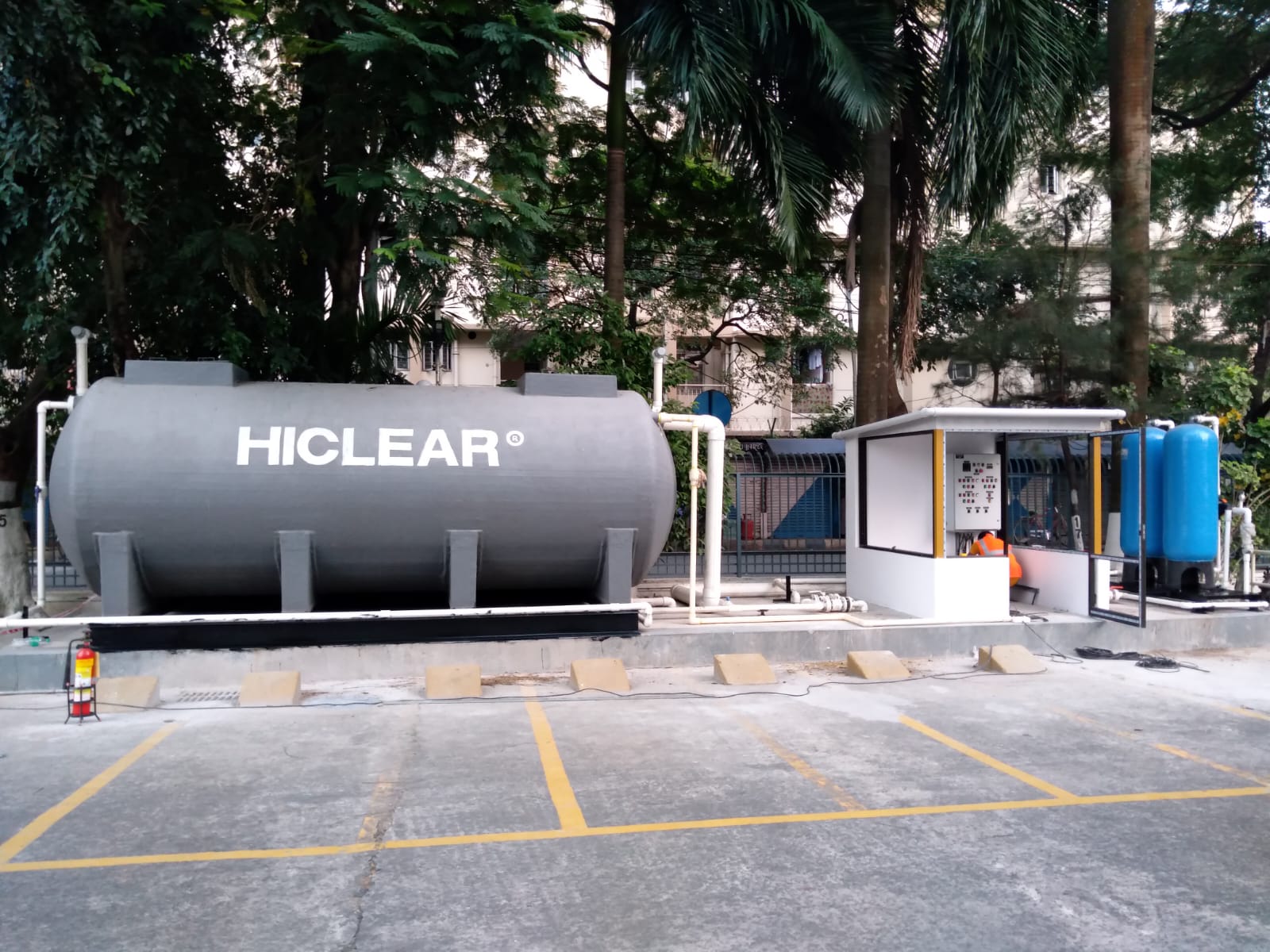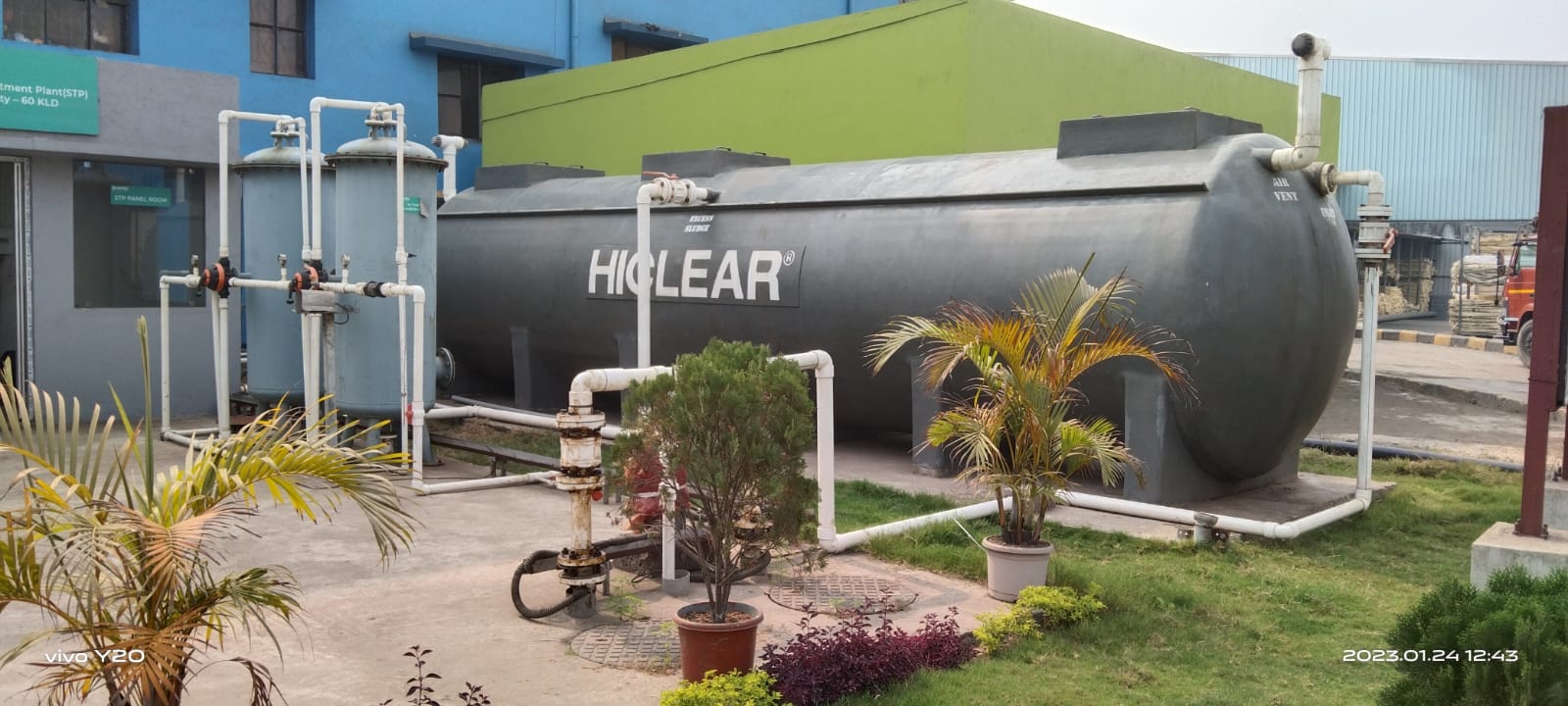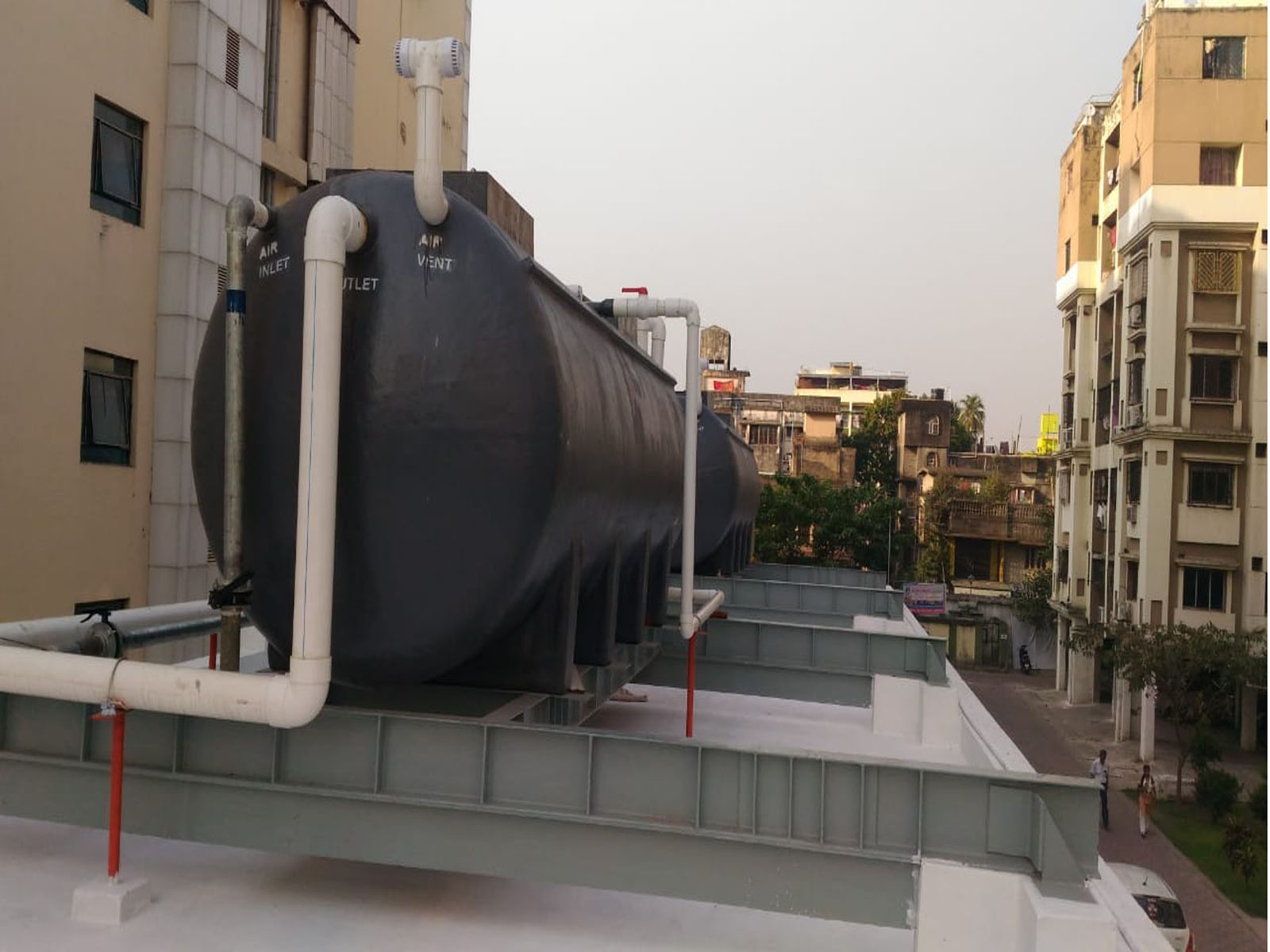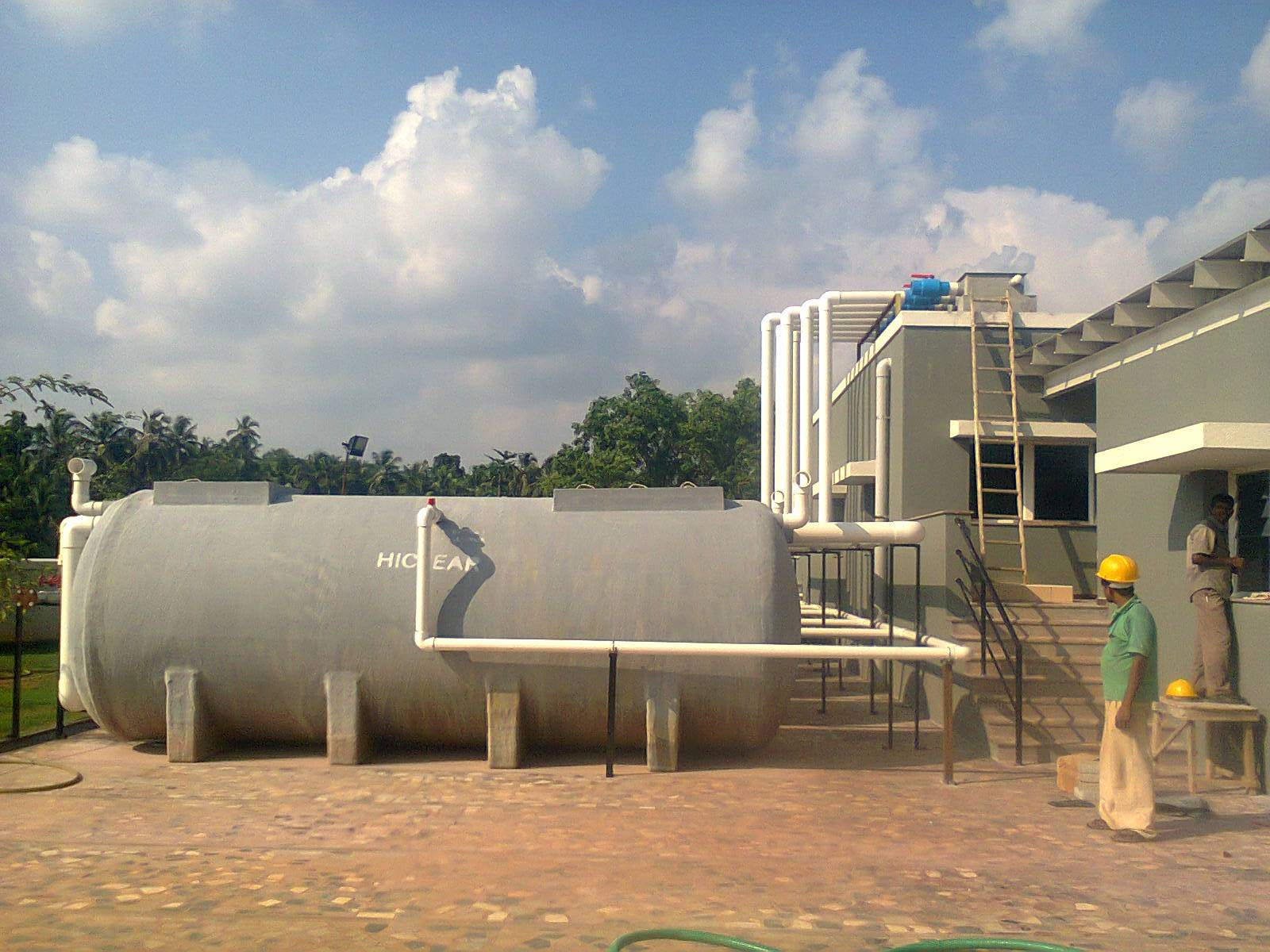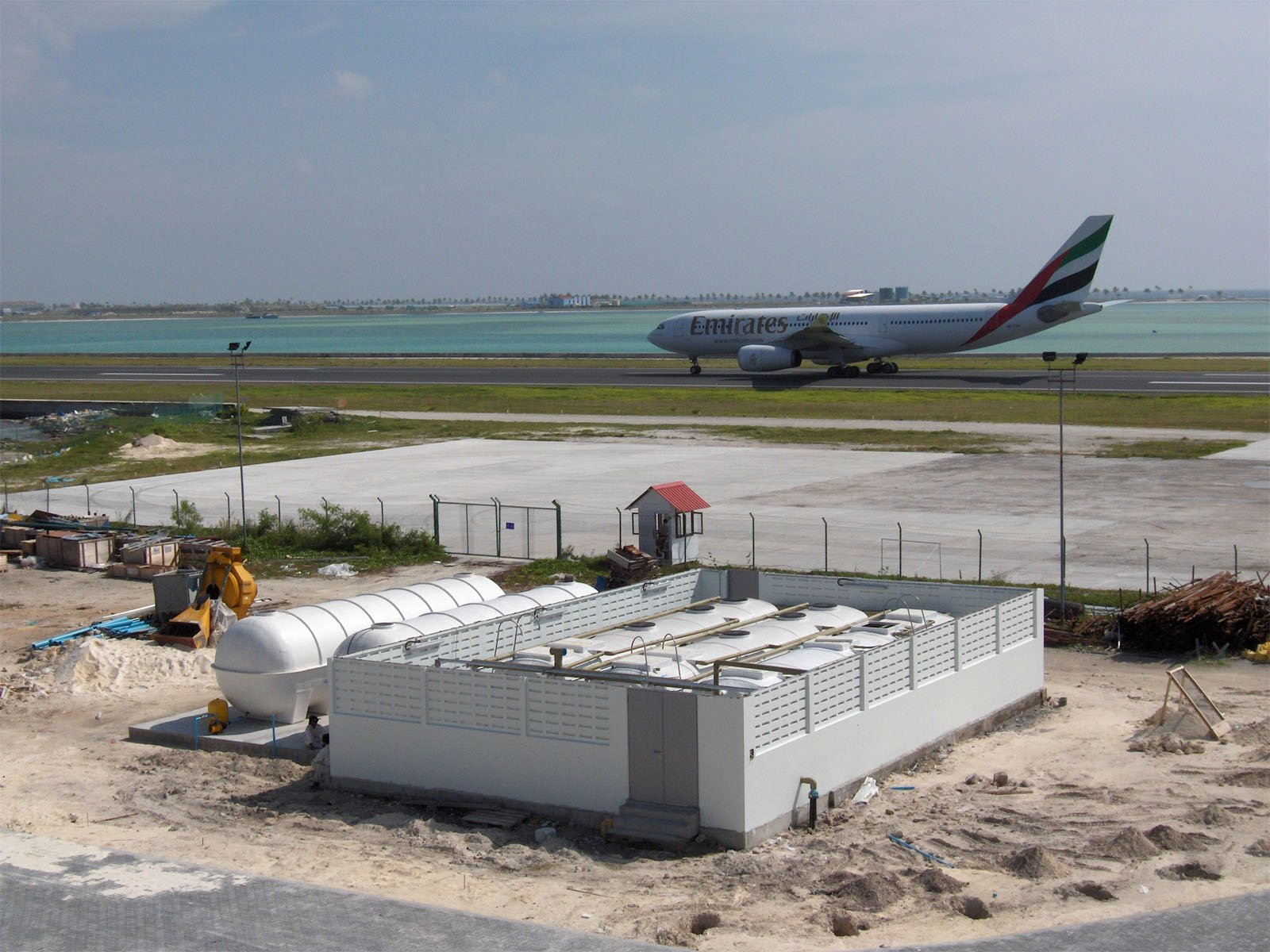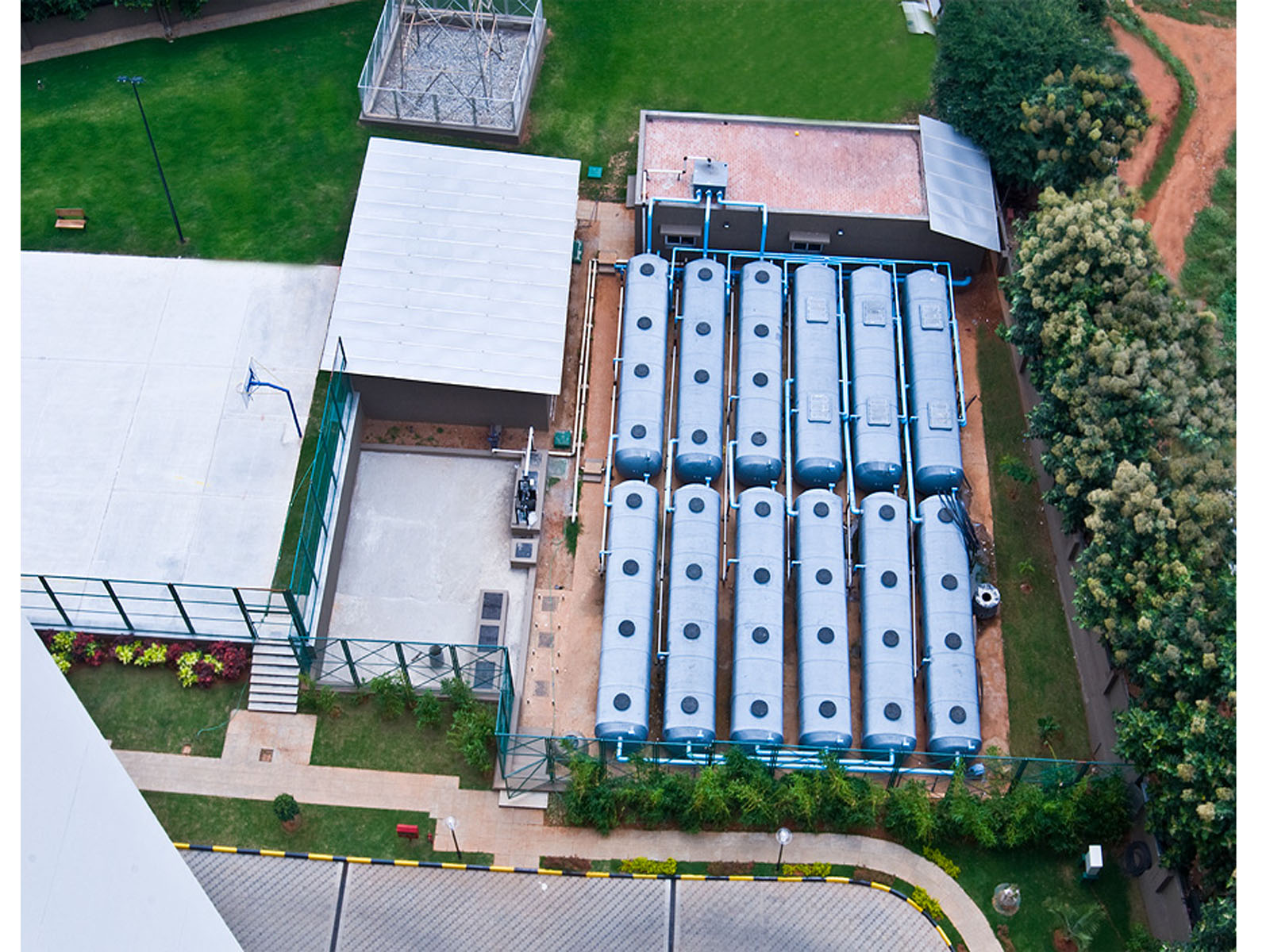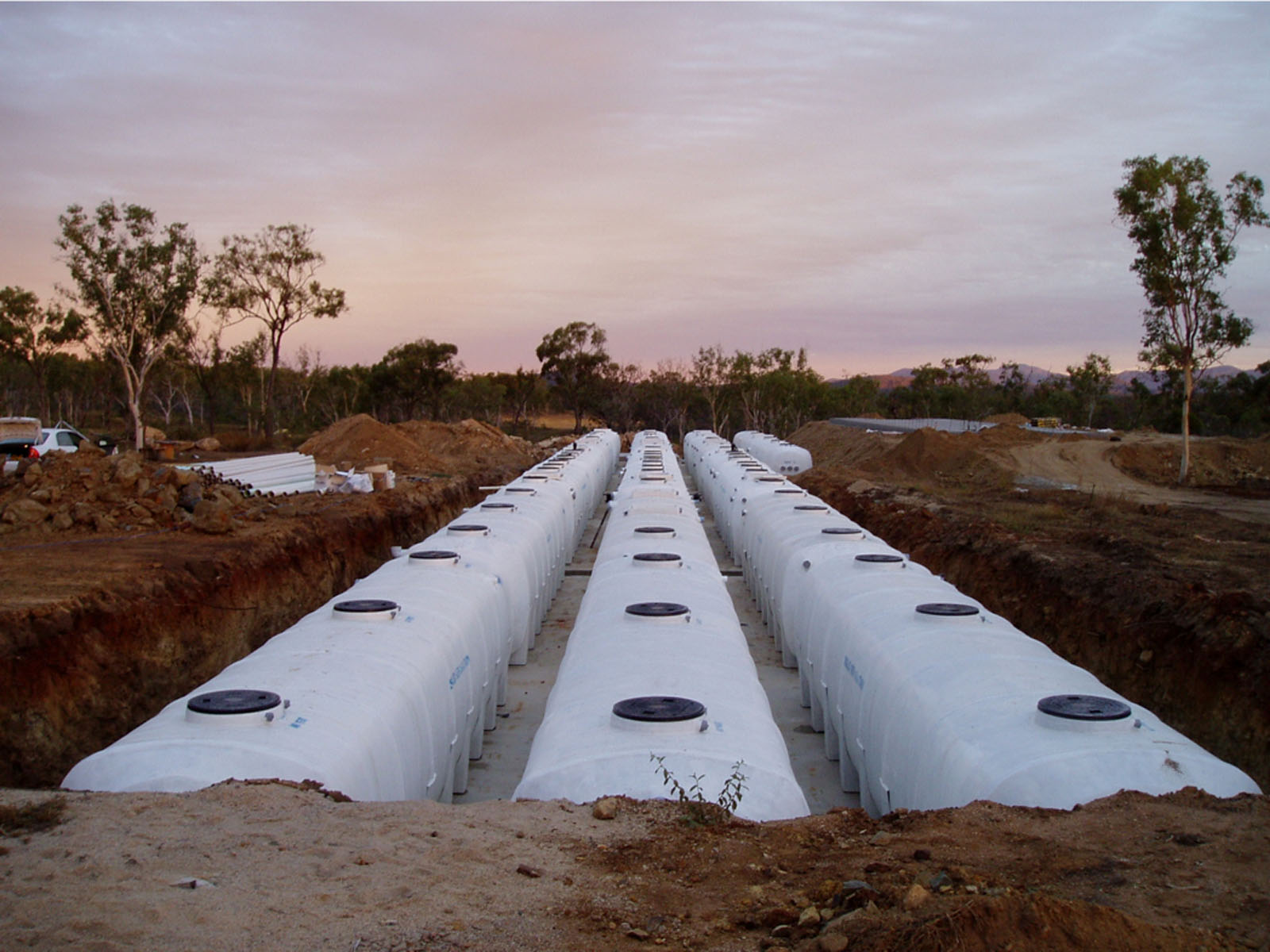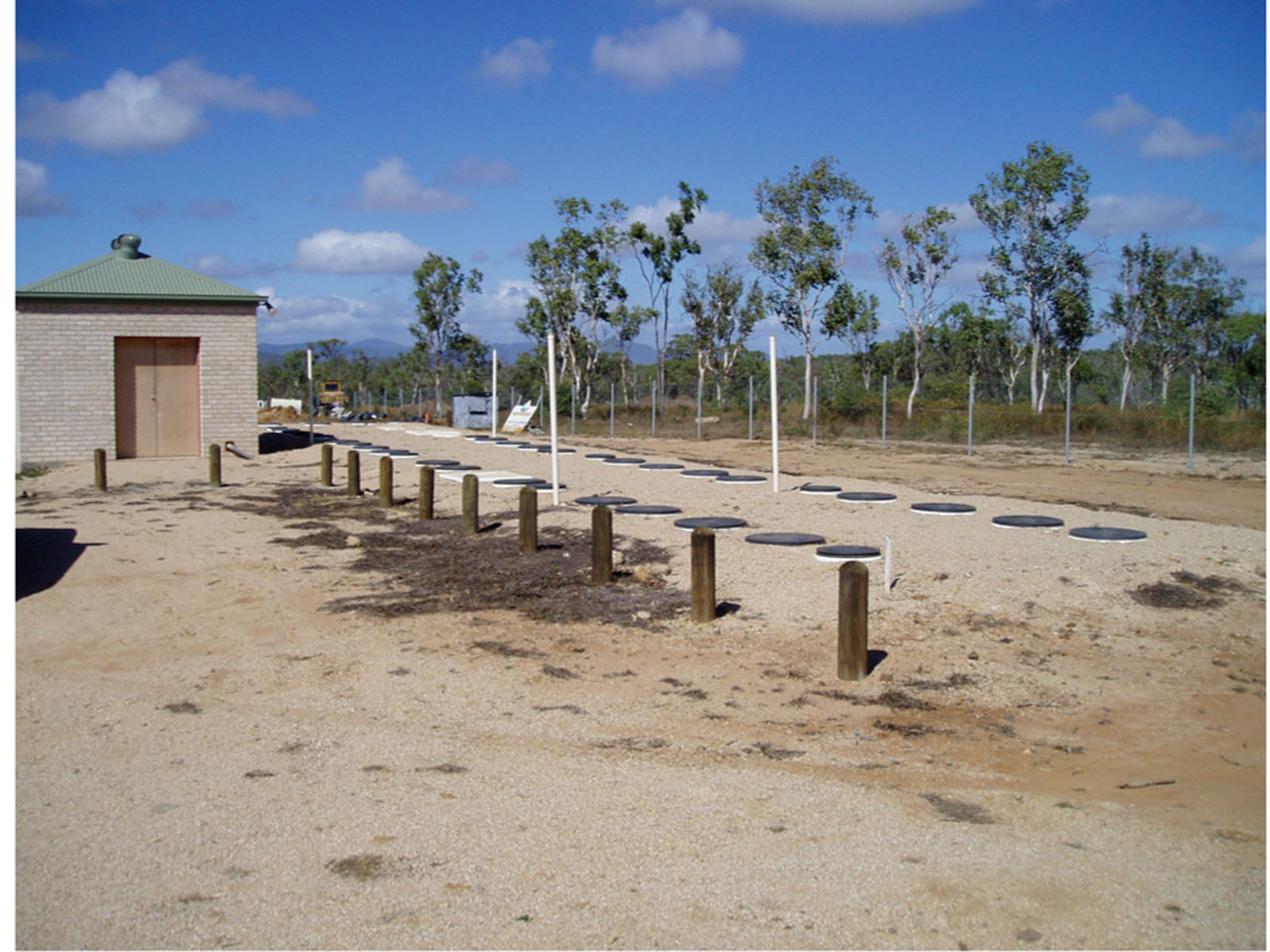The raw effluent collected from different toilets and baths and floor washing etc. is allowed to flow into the collection pit cum grit chamber through a coarse screen and then allowed to flow to the next chamber.
From there the raw effluent (submersible) pumps will pump it to the reaction tank.
The biological process starts as the raw sewage it enters into the Packaged STP unit.
The first step is pre-aeration. Here the raw sewage is briefly aerated and allowed to over flow to contact aeration chamber. On the first impact with the contact media quoted with enzyme, the BOD load drops significantly. At contact aeration chamber, the waste is aerated, which helps grow MLSS (Mixed Liquor Suspended Solids). The MLSS overflows to sedimentation chamber for effective liquid – solid separation. The thick sludge is returned to the aeration chamber while the clear supernatant is allowed to flow out for disposal. As the sludge returns to aeration zone, it starts to get digested and tends to thin down. This is the specialty of this plant; it produces far less sludge as compared to any other sewage treatment plant.
The treated water may be discharged directly to any municipal drain without any further treatment or re-used after tertiary treatment, as per local regulations and re-use application.
- Trusted by demanding customers like UN establishments, US Navy etc. due to the
- Simplicity in design & performance
- Toughness
- Flexibility in seismic conditions compared to RIGID, CENTRALISED tanks.
- Effective & satisfactory performance in unattended / unmanned operations
- Nuisance freeness due to
- no-odour
- NO-SLUDGE REMOVAL conditions so no daily hindrance of manual sludge cake removals from filter press.
- No-visible dirty water, as treatment takes place in sealed FRP tanks. So unpleasant visions are not created even when someone looks out from upper floors.
- NO MOISTURE CREATED FROM OPEN SURFACES OF DIRTY WATER AROUND THE STP, WHICH USUALLY CAUSE SKIN DISEASES.
- Powered by biological treatment process by means of engineered bacteria, these plants do not need daily dosage of harmful and expensive chemicals to operate.
- Compact size, so less footprint. Further constructions can be easily done from above these tanks which help in better land utilization.
- HINDRANCE FREE AS NO NEED FOR REGULAR DE-SLUDGING
- Lesser number of rotating parts. No sludge recirculation pumps, filter press etc. required. Hence lesser energy consumption also.
- Can take care of extreme load fluctuations. Works well even with 10% of design flow and also can work for brief periods with 130-140% loads.
- Not a breeding ground for MOSQUITOES, as no open tanks.
- No need for huge RCC Tanks for the treatment process except the ones used for collection of raw & treated effluent.
- Biological Treatment ensures near to 100% digestion of effluent (i.e. no sludge removal required) leaving clear water to be discharged into environment
- Compact and closed chambers of STP ensure no foul odour or spillage of sewage in the vicinity.
- RCC tanks are rigid. FRP tanks can handle seismic shocks with better flexibility.
- No full-time operator required. The ETP works best when it is left unattended. Only the pumps & blowers need to be monitored periodically as per standard practice for rotating equipment
